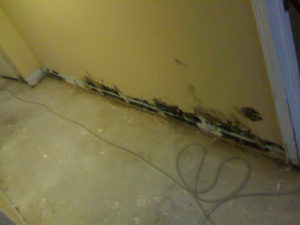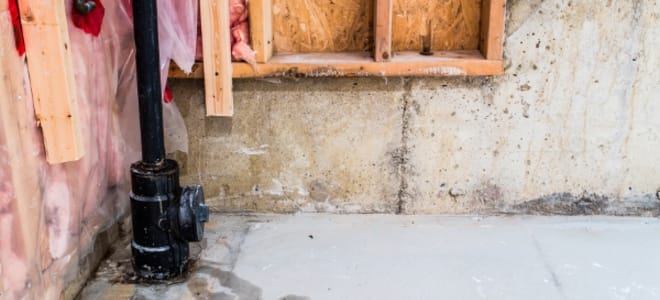Stains from Water on Wall Surfaces: Inspecting and Addressing Strategies
Stains from Water on Wall Surfaces: Inspecting and Addressing Strategies
Blog Article
Just how do you really feel when it comes to Water Stains on Walls?

Water stains on wall surfaces are not pleasurable to the eyes. Often it seems almost unavoidable to experience water spots on wall surfaces in houses.
Home owners living in moist regions continuously deal with the anxiety of water spots on walls. With all-around and accurate information on the reasons of water spots as well as punctual repair procedures, you will constantly be an action in advance of such events.
3 Common Root Causes Of Water Spots on Wall Surfaces
As opposed to common belief, water stains on wall surfaces do not always come from bad structure products. There are a number of causes of water discolorations on walls. These include:
Moist
When hot wet air consults with completely dry chilly air, it causes water beads to form on the wall surfaces of buildings. When there is steam from food preparation or showers, this occurs in bathrooms and also kitchens. The water beads can stain the surrounding walls in these parts of your residence and spread to various other areas.
Wet or condensation affects the roofing system and also wall surfaces of buildings. When the wall is wet, it produces an ideal environment for the growth of microorganisms and also fungis.
Poor Drainage
When making a building strategy, it is crucial to guarantee appropriate water drainage. This will certainly prevent water from seeping into the walls. Where the drain system is obstructed or missing, below ground moisture builds up. This web links to excessive wetness that you discover on the walls of your building.
So, the leading source of wet walls, in this instance, can be an inadequate water drainage system. It can additionally be because of bad management of sewer pipelines that go through the structure.
Pipeline Leaks
A lot of residences have a network of pipes within the wall surfaces. This makes certain that the pipelines are well away from the reach of damaging rodents. It always increases the stability of such pipelines, as there is little oxygen within the wall surfaces. This prevents corrosion.
Yet, a disadvantage to this is that water leak impacts the walls of the structure and also triggers extensive damage. An indicator of defective pipelines is the look of a water stain on the wall surface.
Pro Idea
A houseplant in your home also increases its moisture. So, if your home is already damp, you may intend to present houseplants with minimal transpiration. An example of appropriate houseplants is succulents.
Water Discolorations on Wall: Repair Service Tips
Property owners would typically desire a quick fix when handling water stains. Yet, they would certainly soon understand this is counterproductive as the water stains repeat. So, below are a couple of helpful tips that will direct you in the repair of water stains on walls:
Verdict
Although no person wishes to have water discolorations on walls in their home, it can happen to the most effective people. This post offers you take advantage of, as you now understand exactly how to manage this incident if it does happen.
It is constantly best to hire specialist solutions to assist fix the damages in your home.
Often it seems almost inescapable to experience water spots on walls in houses.
Contrary to popular belief, water stains on walls do not constantly stem from inadequate structure products. There are a number of causes of water stains on walls. The water droplets can stain the surrounding walls in these parts of your home and spread to various other locations.
Right here are a few practical pointers that will certainly lead you in the fixing of water discolorations on wall surfaces:
CHECKING FOR WATER DAMAGE
Water damage can be costly, and it may begin before you even notice the first signs of trouble. Water damage can cause mold and mildew in your walls and floors, which can create an abundance of health concerns for your family. It can also lead to costly repairs of various appliances and general home fixtures. To avoid the pricey consequences of water damage, here are Warner Service’s top 5 places you should check:
The walls – The easiest place to spot the beginnings of water damage is on the walls and ceilings of your home. If water damage is present, there will most likely be water stains, especially around the windows and doorframes, and/or cracks in the drywall. If a stain looks unusual (discolored to brown, black or gray, raised texture), has a swollen appearance or is soft to the touch, contact a professional immediately. The pipes – To avoid water damage, consistently check the pipes in your kitchen (especially the dishwasher and ice maker), bathrooms, laundry room (specifically washing machines) and basement for corrosion, leaks and water stains. Pay special attention to where the pipes connect in your home and the location of caulking around the bathroom fixtures, including toilets, sinks, showers and tubs. Missing or loose caulking and grout could be signs of leaking water. This seepage can also quickly cause mold and rust, so double check your water heater and tank for wet spots on the floor. The floor – Water damage is very easy to spot on the floor. Look for any warping or buckling of the material, especially in the basement. If your home has wood flooring, look for bright white or dark stains. If your home has carpeting, keep it dry and clean. A damp carpet that smells of mold could cause water damage and health problems. To avoid this, consider installing floor pans under your appliances to help prevent damages from small, slow and undetected leaks. The basement and attic – If your basement or attic smells odd check for mold and mildew around the area, especially the valley where the roof meets. While you are inspecting those areas, check for wall cracks, floor stains, rust and dampness in the insulation. If you live in a colder and/or rainier climate, perform routine checks for water damage from melting snow or ice and rain. The exterior – Check the roof for damaged flashing and missing, cracked or curled shingles. There should also be no standing water anywhere outside your home. This could be caused by puddles, leaky rain gutters or hoses, poor drainage, or short gutter spouts. Invest in a sump pump system or water flow monitoring system, and perform routine maintenance on these outdoor appliances to avoid indoor water damage.

Do you enjoy reading up on Water Stains on Walls? Leave feedback down below. We would be delighted to listen to your reactions about this page. Hoping that you come back again later on. Liked our posting? Please share it. Let somebody else discover it. I appreciate reading our article about Indicators of Water Damage Behind Walls.
Preventative solutions offered. Report this page